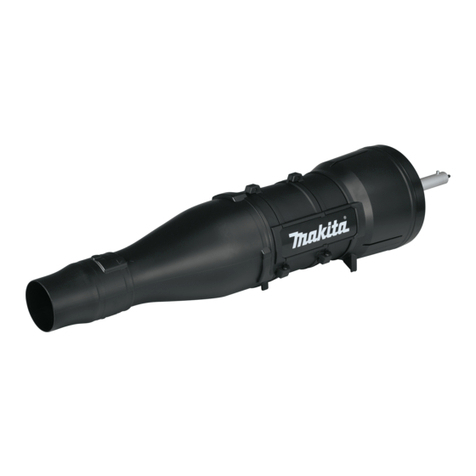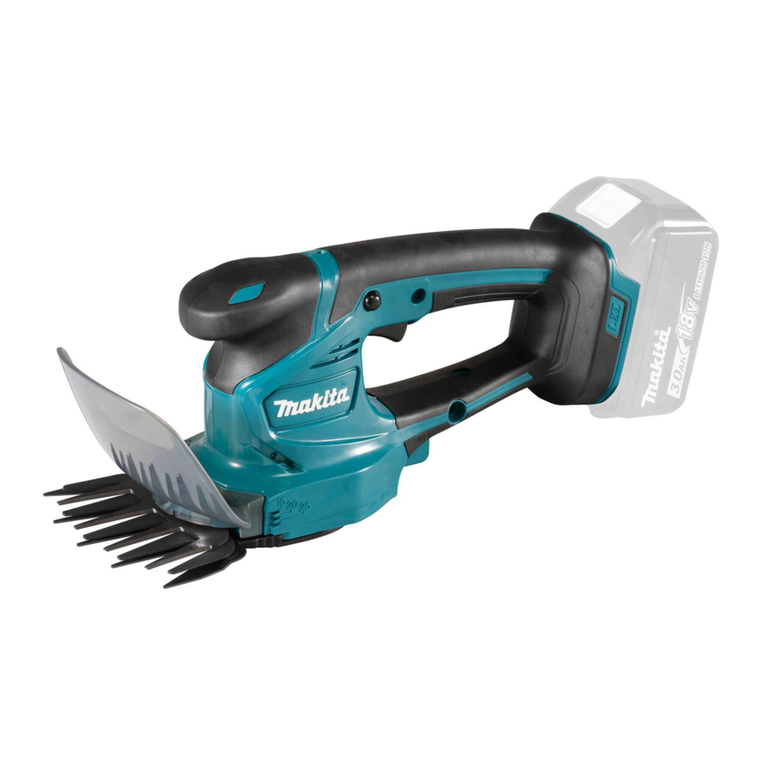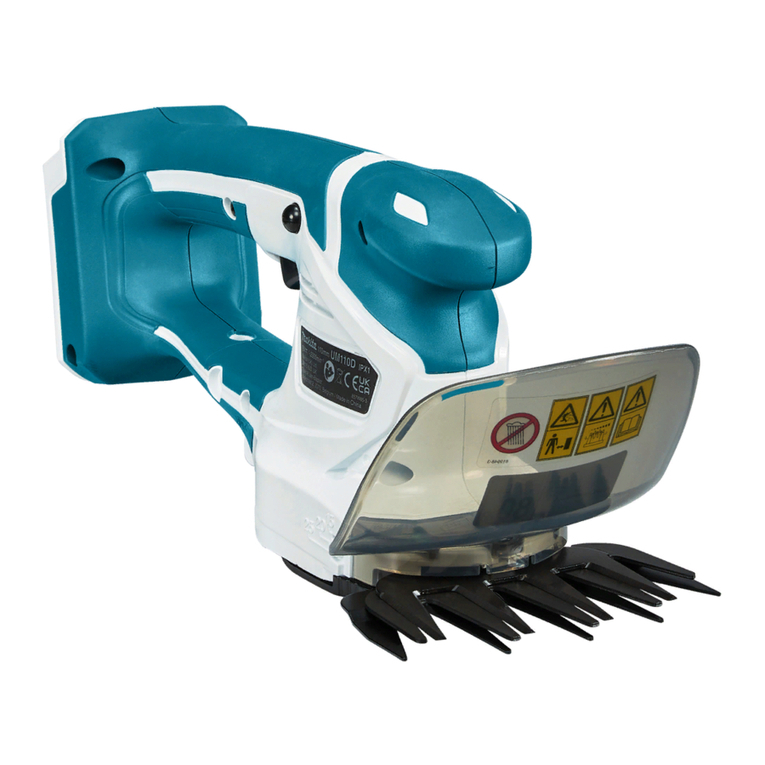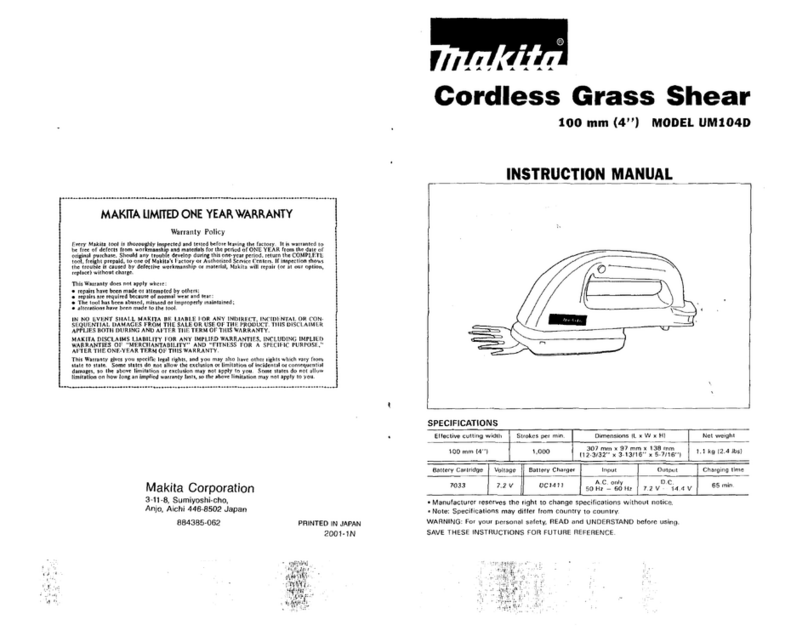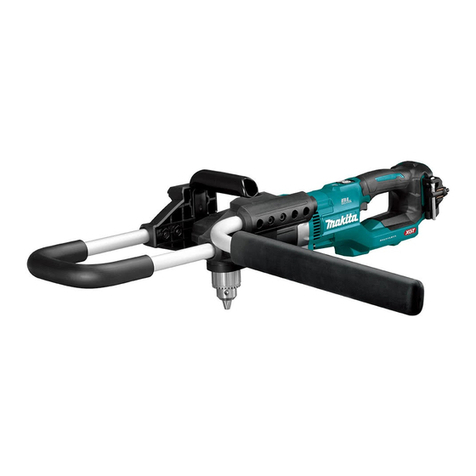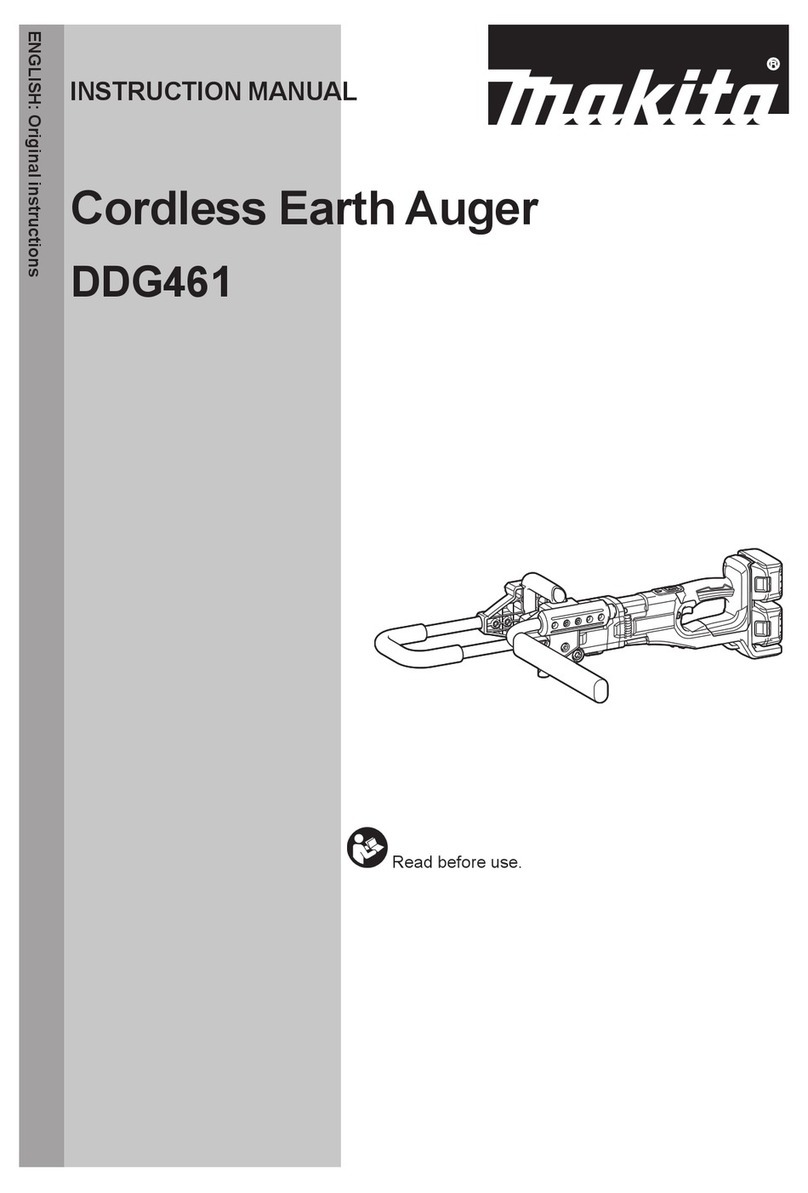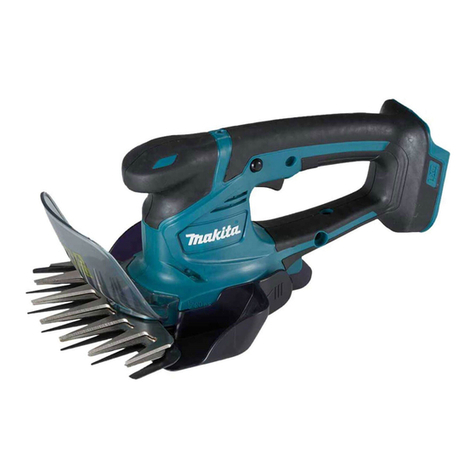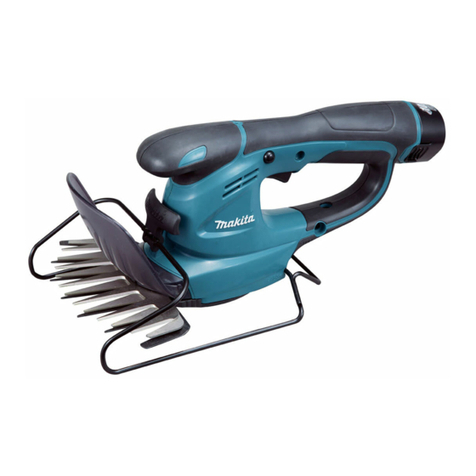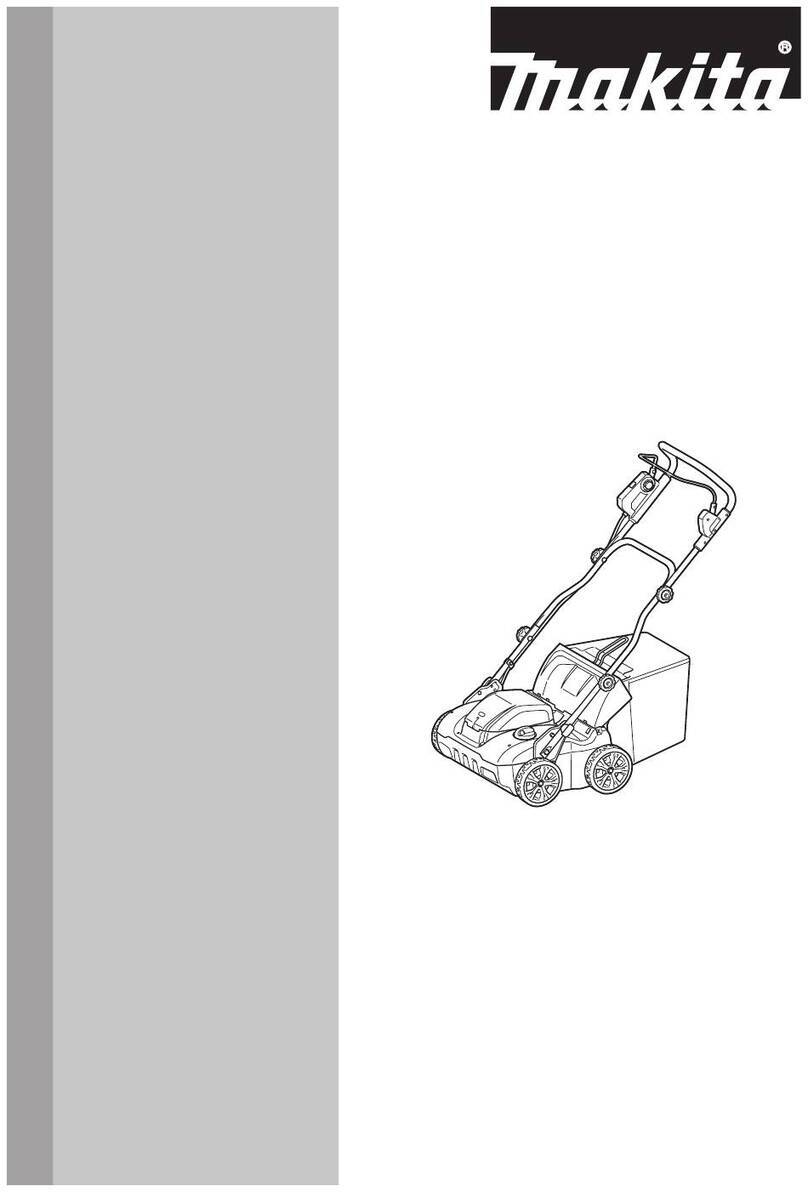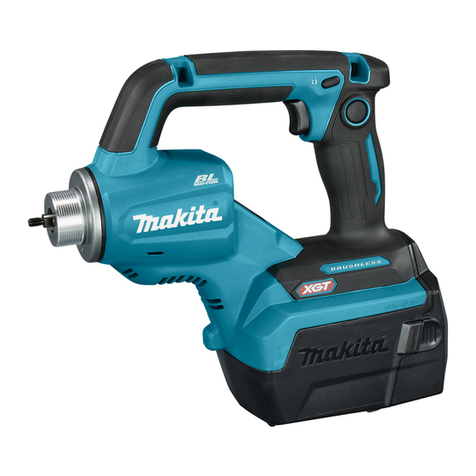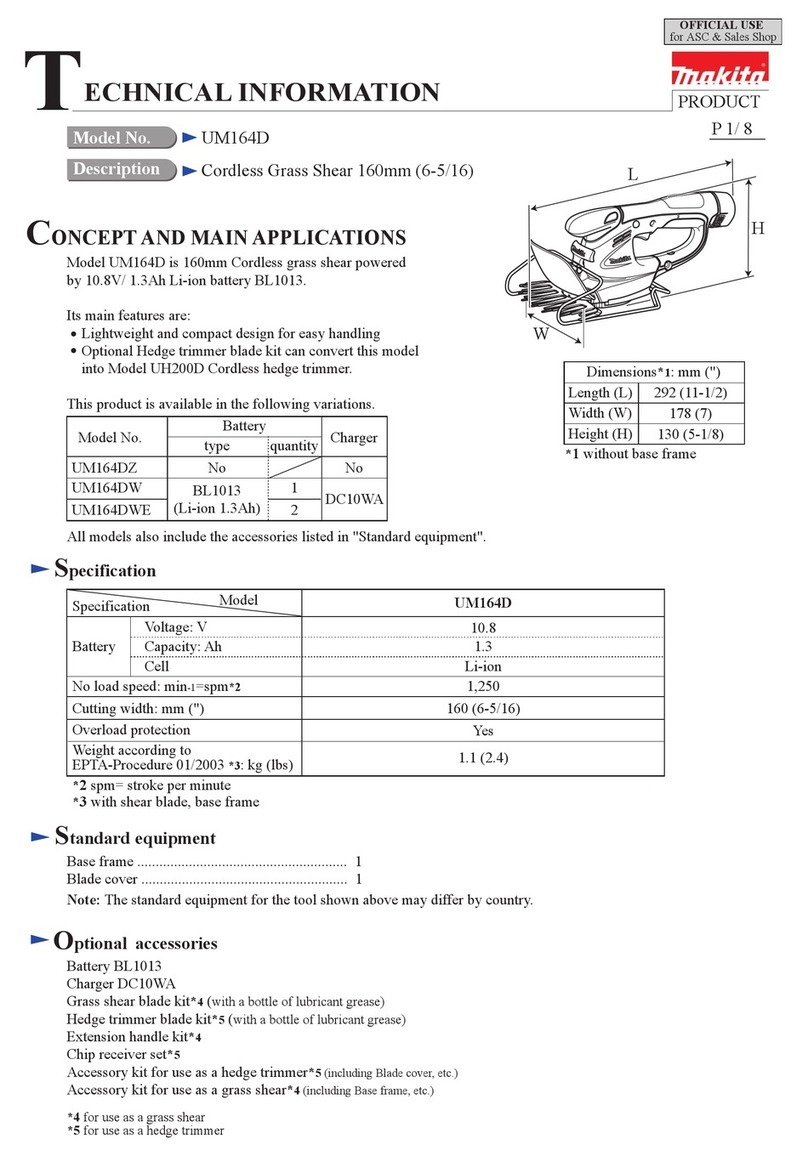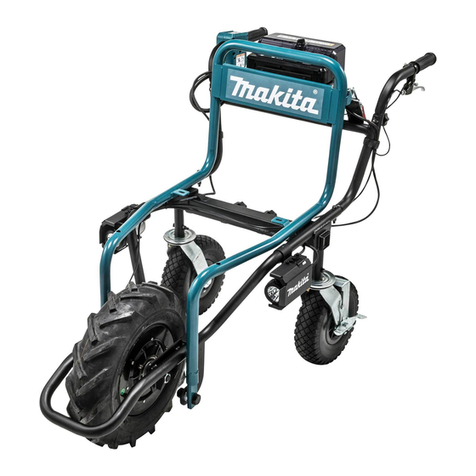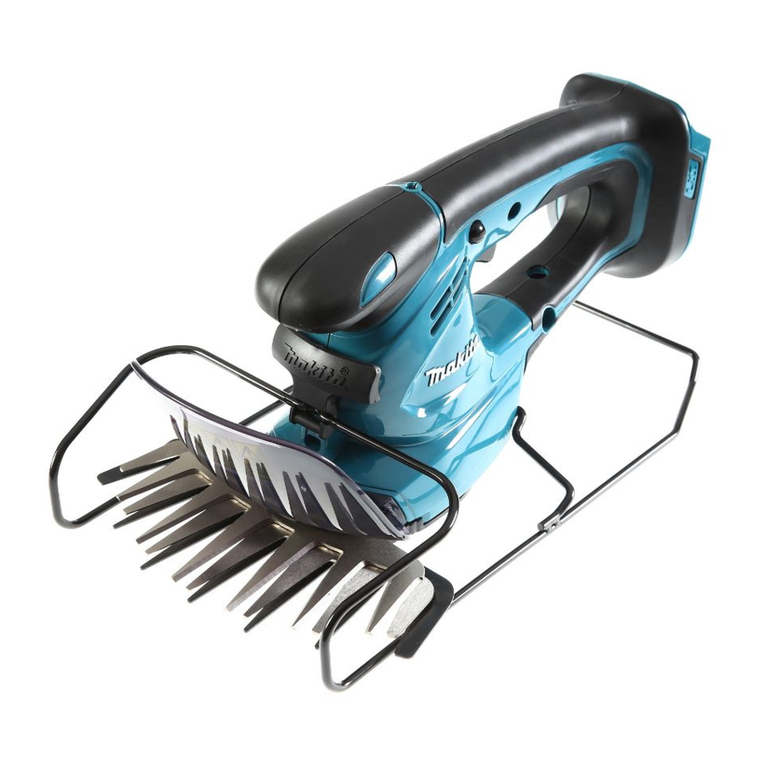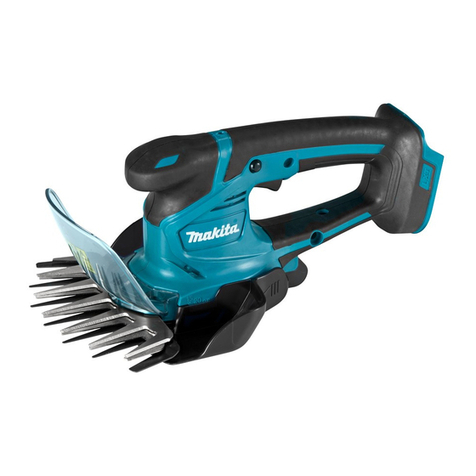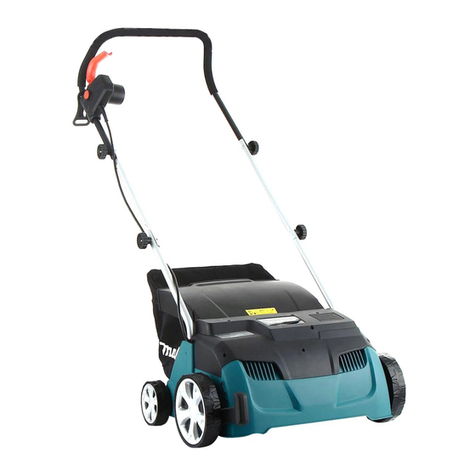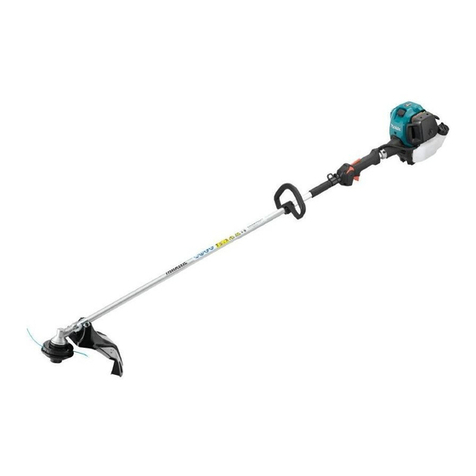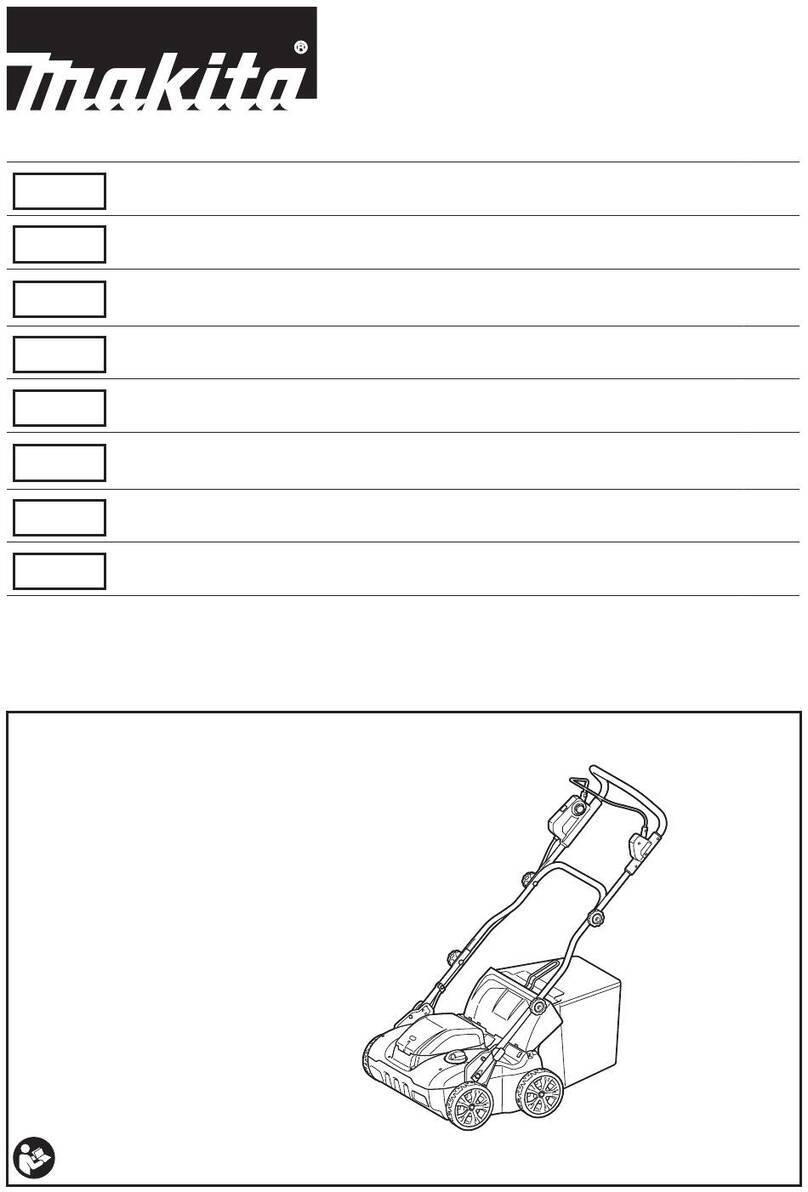5ENGLISH
2. Never service damaged battery packs. Service
of battery packs should only be performed by the
manufacturer or authorized service providers.
3. Follow instruction for lubricating and chang-
ing accessories.
Battery powered wheelbarrow safety
warnings
1. While operating the machine, always wear
non-slip and protective footwear. Non-skid,
closed-toed safety boots and shoes will reduce the
2. Inspect pathway before hauling objects/mate-
rials. Familiarizing yourself with the pathway and
ensuring it is wide enough to safely navigate the
machine under load will help reduce losing control
of the machine.
3. Use extreme caution on slippery, loose and
unstable terrain. Wet and slippery surfaces, such
as wet grassy areas, snow or ice, and loose and
unstable terrain, such as sand or gravel surfaces,
may cause the machine to lose traction and may
adversely affect steering, braking and stability.
4. Do not operate the machine on excessively
steep slopes. This reduces the risk of loss of
control, slipping and falling which may result in
-
mum recommended grade and side grades may
increase the risk of instability and may adversely
affect the ability to stop safely.
5. When working on slopes, always be sure of
your footing, always work across the face
of slopes, never up or down, and exercise
extreme caution when changing direction. This
reduces the risk of loss of control, slipping and
6. Whenever possible, use level areas for stop-
ping, loading and unloading and never leave
machine unattended on a slope. The machine is
more unstable when resting on a slope than when
resting on a level surface.
7. When stopping on slopes, face the machine
uphill or downhill and block unbraked wheels.
The machine is less stable when facing across a
slope. Unbraked wheels, especially those of the
castor-type, can potentially turn and roll downhill
even while the front wheel parking brake is set.
8. When leaving the machine unattended, set
parking brake once the machine is located in a
safe stopping area. The parking brake prevents
unwanted movement of the front wheel and can
improve stability.
9. Ensure that ramps are clean, strong and
secure.
ramps must be clear of loose debris and strong
enough to withstand the weight of anticipated
loads that will be moved over them. They must
have adequate blocking underneath and to both
movement under load. All ramps must be wide
enough to have sure footing while hauling loads
across them.
10. Ensure the hopper is down and hoppers
and dump-gates are securely latched when
not dumping the load and when storing the
machine. Unlatched hoppers or dump-gates can
unexpectedly open or shift.
11. Avoid extending ramps without toe boards
or railings over open spaces. Elevated open
spaces and open trenches invite accidental falls
toe boards or railings on ramps over open spaces
to prevent driving the machine off the ramp.
12. Ensure all locking screws are tightly secure
before using. Locking screws on the rear wheels
and open-type carrier front and side walls must be
secure to prevent unwanted movement of these
13. Never operate the machine in an overloaded
condition. Make sure the machine has the proper
have to be hauled. Excessive loads will make
will increase stopping time and distance, and will
increase the risk of instability.
14. Never operate your machine in an over stacked
condition. Stacking material above the tray rim or
over the sides of the tray can cause the machine
to be uncontrollably out of balance and control.
15. Use containers and tie-downs to secure loads.
Loose and/or insecure loads are more likely
to shift which can result in loss of stability and
control.
16. Loss of
17. Remove safety key when not in use. The safety
key prevents unwanted, powered use of the
machine, such as by children or other untrained
or unauthorized persons. Without the key, electric
power cannot be turned “on”.
18. This machine cannot be used on public roads.
Use of the wheelbarrow on a public road is unlaw-
19. Use a sturdy plate with anti-slip and detach-
ment prevention function when loading and/
or unloading this machine for transportation,
or moving this machine between different
levels. Make sure the plate inclination does not
exceed 12°, and operate the machine slowly
and carefully. Unstable and quick operation
may result in overturn and/or falling.
20. Do not disassemble, repair, or modify this
machine.
Operation
1. When operating the machine, stand behind the
2. Do not operate the machine while riding on the
machine.
3. Do not allow others to ride on the machine.
4. When operating the machine in reverse and
walking backward, watch behind you and be
careful not to slip or trip.
5. Do not use the machine when visibility is poor
because there is a risk of striking obstacles.


